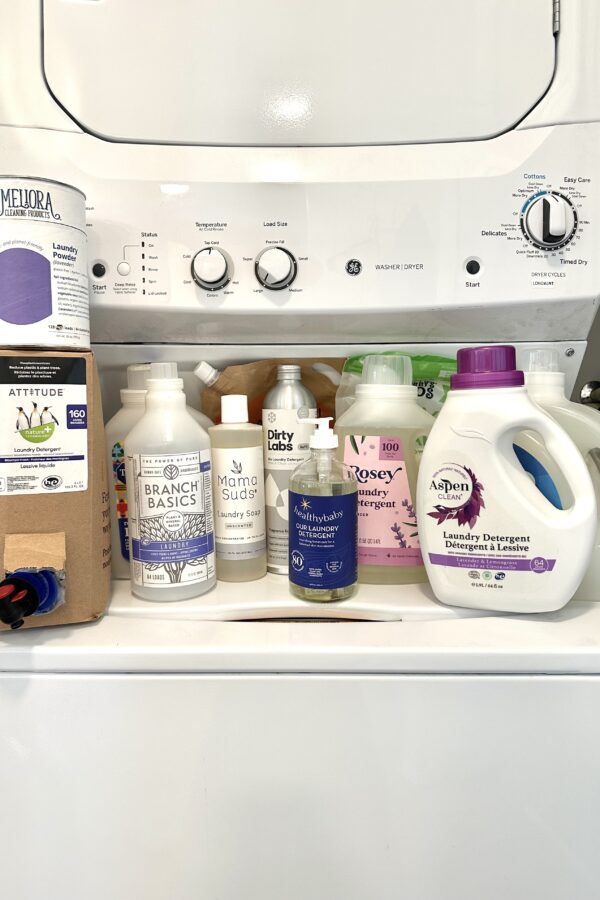In a Nutshell:
- Duraflame logs release carbon dioxide when burned (although it’s less than regular wood). Other chemicals accompany these emissions, including carcinogenic PAHs.
- More of a problem is the list of “proprietary” ingredients and materials used in Duraflame’s starter logs. In addition to the petroleum-derived paraffin wax, there are also other chemicals used to quicken flame production, color the flames, make crackling sounds, bind the materials together, and more.
- Since Duraflame keeps these materials hidden, it’s impossible to know for sure whether they’re truly safe. (Below, we’ve included some best guesses about what these materials might be.)
Table of Contents
- In a Nutshell:
- Duraflame and Carbon Emissions
- Duraflame and Air Pollutants
- What’s in Duraflame Logs?
- Duraflame MSDS
- Paraffin in Duraflame Logs
- Duraflame and California Proposition 65
- Duraflame and Creosote
- Duraflame Wrapper
- Duraflame Flame Colors
- Duraflame Crackle
- Are Duraflame Logs Safe?
- Electric Fireplace Inserts
- TLDR: Are Duraflame Logs Toxic?
Most of us have cherished memories of gathering around a fire with loved ones—whether it’s roasting marshmallows over a summer campfire or sipping cider in front of the fireplace on a cold winter’s night. What is not so cherished is all the black soot and smoke required to start and maintain the flames in a safe manner.
Duraflame logs attempt to solve that problem for you—without releasing hazardous chemicals. But how well do they succeed?
In this article, you’ll discover the layers of toxicity that go into producing Duraflame logs. Besides these, we list some of the major toxins released during burning. (The full list numbers in the hundreds.)
When ventilation is lacking or your chimney damper hasn’t done its job properly, those toxins remain in your home’s air, damaging your health with each breath you take.
Fortunately, there is a safer, less polluting alternative to Duraflame logs. Discover our top picks for eco-friendly options instead of artificial (or even real) logs.
Duraflame and Carbon Emissions
One of the easiest ways individual homeowners can reduce their carbon emissions is simply by not doing something: lighting a fire in their fireplace or wood stove. Besides contributing to the climate crisis, burning wood releases toxic contaminants into the air, possibly into your home.
Although there are fewer carbon emissions attributed to Duraflame logs compared to real wood (cordwood), they are still released. Some jurisdictions consider them to be in the same polluting class as cordwood and forbid their use on poor air quality days—despite Duraflame’s attempt to seek an exemption to the ban.
Duraflame and Air Pollutants
In 2005, the United States Protection Agency (EPA) and Environment Canada teamed up to analyze the pollutants emitted by artificial logs. Here is a table of information comparing five artificial log brands. Find brief descriptions of the pollutants below the table. See the document for a complete list.
| Pollutant | JavaLog | Northland Log | Pine Mountain Superlog | Duraflame Log (Canada) | Duraflame Log (USA) |
|---|---|---|---|---|---|
| Volatile Organic Compounds(VOC) (g/hr) | 9.9 | 10.3 | 14.5 | 13 | 13.5 |
| Respirable Particles (PM2.5) (g/hr) | 7.9 | 7.0 | 8.9 | 8.7 | 12.2 |
| PAH (mg/hr) | 44.2 | 28.0 | 46.2 | 54.1 | 65.1 |
| Carbon Monoxide (CO) (g/hr) | 35.7 | 25.3 | 27.8 | 61.0 | 59.7 |
| Benzene (g/hr) | 0.29 | 0.18 | 0.28 | 0.42 | 0.53 |
| Lead (mg/kg) | <20 | 23 | 23 | 25 | 28 |
VOCs: Airborne chemicals derived from petroleum products, wood; some are carcinogenic
PM2.5: Particle pollution so small it enters lung alveoli and organs where it can’t escape easily; causes systemic damage
PAH: Polycyclic aromatic hydrocarbons are a family of chemicals produced by fossil fuel and wood combustion; many are carcinogenic
CO: Carbon monoxide is a poisonous, colorless, odorless gas released from the incomplete combustion of fossil fuels
Benzene: An example of a carcinogenic VOC
Lead: A heavy metal neurotoxin that causes irreversible brain damage; no safe exposure according to the CDC
NOTE: The study did not test specifically for dioxins, which are highly carcinogenic substances released from burning fossil fuels or cordwood.
Conclusion from the US/Canadian Study on Artificial Logs Including Duraflame
What is striking about the US/Canadian study is that Duraflame sold in the U.S. consistently rates worse than Duraflame sold in Canada and three other brands for most pollutants considered in this study.
So, the major components of artificial logs—sawdust and wax—are not as harmless as you may have thought. Are the other proprietary materials in the logs also responsible for the air pollution produced by them?
In fact, you may be wondering by now: What exactly is in a Duraflame log? Let’s take a closer look.
What’s in Duraflame Logs?
The Filtery reached out to Duraflame about the materials in its products. They did not answer our basic question: Which of your products contain paraffin wax? Instead, Duraflame replied via email: “Duraflame firelogs…are made of sawdust, agricultural fibers, waxes, and oils.”
Duraflame MSDS
If you’re like most shoppers, you may not know that the Material Safety Data Sheet (MSDS) for Duraflame logs may contain more specific information regarding the type(s) of wax in the product. Unfortunately, an MSDS doesn’t reveal every single component in the product. But at least it’s a start.
So, we requested a MSDS. Duraflame emailed Version 2.0 (revised 2/22/2018) to us as a file, which you can see here. The relevant part listing materials in several different kinds of Duraflame logs states:
| Material | Percent (%) |
|---|---|
| Sawdust from various softwood and hardwood species, groundagricultural biomass and other proprietary and miscellaneous materials. | 40-70 |
| Hydrocarbon waxes | 12-36 |
| Paraffin waxes | 6-30 |
| Fatty acids, C16-18 | 6-30 |
| Fatty acids, C14-18 and C16-18-unsaturated, distillation residues | 1-30 |
| Natural seed used for crackling sound | 1-10 |
Paraffin in Duraflame Logs
In terms of potential toxicity, paraffin is the problem. Paraffin is derived from petroleum, a fossil fuel. The pollutants listed in the EPA/Canada study above are released during the burning of paraffin, especially poorly refined paraffin. Unfortunately, we can’t tell how refined it is from the MSDS.
Using 100% plant-based wax would burn cleaner. Duraflame’s new Enviro-Log is made with no petrochemicals (such as paraffin). This is good. However, burning the Enviro-Log still produces carbon emissions. Also, sawdust combustion will produce some of the pollutants listed from the study above.
Duraflame and California Proposition 65
The Duraflame MSDS also contains this statement that further substantiates the idea that Duraflame logs are toxic:
“WARNING Combustion of this product results in emissions that can expose you to chemicals including carbon monoxide, soot, smoke and other combustion by-products, which are known to the State of California to cause cancer, birth defects or other reproductive harm, and/or other adverse health effects. For more information go to www.P65Warnings.ca.gov.”
Duraflame and Creosote
A statement on the Duraflame website makes us wonder if we really want this product in our homes: “Burning a Duraflame firelog results in significantly less creosote accumulation than burning wood.” But creosote—the sticky tar full of PAHs produced from wood- and fossil fuel burning—is still a harmful byproduct of Duraflame logs. Definitely not healthy to be around.
So, based on the components of Duraflame logs, it’s reasonable to think of Duraflame logs as unhealthy, cancer-promoting paraffin candles with sawdust as the wick plus several other proprietary materials. What could those be? Here’s a peek at what else could be in the package.
Duraflame Wrapper
According to the Duraflame website, “Duraflame firelogs have a proprietary easy lighting process that is designed to work with the wrapper in place.” The “proprietary” part of the statement probably refers to the accelerant in the wrapper that hastens its catching a flame. Unfortunately, it’s a mystery what the accelerant actually is.
From this list of likely accelerant candidates, a substance like a petroleum distillate, lacquer, paraffinic solvent, or isoparaffins could be what gets the action moving. All of them are fossil fuel-derived.
We can probably say with certainty that the accelerant is not dimethyl sulfide (also on the linked list above) which gives off a rotten egg smell. Don’t think Duraflame would sell as many artificial logs as they do if dimethyl sulfide was used!
It’s interesting that Duraflame instructs users to ignite the wrapper. If the inks are petroleum-based, burning those would contribute more toxic gases —of heavy metals as well as PAHs—to the air.
Duraflame Flame Colors
You may have noticed on some Duraflame packages that you should not roast foods over them, which is especially important of you were planning on roasting marshmallows over a camp fire. Ever wonder why that is? It’s likely because of the chemicals added to produce color in the flames.
Examples are copper sulfate (root killer) or calcium chloride (road de-icer). Fumes could irritate your eyes or airways. Ingesting them on food could lead to mouth burns, nausea, and vomiting. Or maybe the roasted hot dog or marshmallow will just taste weird if there’s only minimal contamination from the color chemicals in a Duraflame log.
Some color chemicals such as ammonium chloride could produce toxic ammonia in a fire. But without specific information on which chemicals are in the artificial log, you can never be sure what you’re dealing with when you light it.
Because of the presence of the wrapper and color chemicals in the residual ash, Duraflame warns users not to add them to your garden. Just another red flag for toxicity.
Duraflame Crackle
The Duraflame MSDS lists “a proprietary seed” as the source of the crackling sound of the ignited log. There is no further information on if the seed has a chemical coating. Duraflame claims it’s safe. So, if you use their product, you’ll have to take their word for it.
Are Duraflame Logs Safe?
It is difficult to say with a high level of certainty that Duraflame logs are safe, because there are so many things we do not and cannot know about the product. They are proprietary. The company will not divulge their secrets. They assure you it’s safe. Is it safe enough for you?
In considering whether Duraflame logs are safe or not, the negative effects of air pollution cannot be exaggerated. Premature death, lung cancer, chronic obstructive pulmonary disease (COPD), and asthma are just a few of the known outcomes. A recent study showed that exposure to burning artificial logs—but not real wood—was associated with a 42% increased risk of breast cancer.
Along with the known pollutants associated with fossil fuel or wood combustion, there may be others due to burning of proprietary materials in the logs. We’ve made educated guesses about what some of these proprietary components could be. Along with the predictions, we’ve tried to assess relative toxicity.
Besides the known toxicities of several combustion products—like PAHs and PM2.5—you have plenty of unknowns, too. If this is too much for you to bear in just one product, you’ll be relieved to know there is a non-toxic alternative to Duraflame logs.
Electric Fireplace Inserts
Electric fireplace inserts simulate a roaring blaze without the hassle of having to tend to live flames frequently to keep it going safely. No black soot, flying embers, or suffocating smoke will ruin the pleasant atmosphere created by a fireplace insert.
Maintenance-free, many electric fireplace inserts can be permanently wired into your home’s electrical system or simply plugged into an outlet in the back of the fireplace. They can be mounted on walls or installed on the ground. Some models can double as space heaters.
Choose from a variety of colors and designs including our top picks:
- Turbro Eternal Flame Budget-friendly with an infrared quartz tube, this device will add significant warmth to its spectacular display. And you don’t even need a fireplace. Just plug it in anywhere and relax.
- Dimplex Revillusion Featuring an electric log insert, this model is so realistic it could be mistaken for the real thing! It also functions as a space heater and works by remote control.
- PuraFlame Klaus Can be wall-mounted or set in a fireplace. Fire crackling sounds add to the effect of dynamic flames. A glass door and mesh screen provide safety.
TLDR: Are Duraflame Logs Toxic?
Duraflame logs release carbon dioxide when burned. Although less than wood, these emissions contribute to the climate crisis.
There are toxic chemicals that accompany the carbon emissions. Polycyclic aromatic hydrocarbons (PAHs) top the list. Some of these air pollutants are carcinogenic. Many of them lead to or exacerbate cardiovascular conditions, cancer, or asthma.
The Duraflame paper wrapper contains a proprietary accelerant that quickens flame production. Its toxicity is unknown. There are inks in the wrapper that also may be toxic when burned.
Besides sawdust, there is a wax that binds them together in the log. In almost every log type, Duraflame uses paraffin, a petroleum-derived chemical that releases toxic chemicals upon burning.
There are other proprietary materials in Duraflame logs of unknown toxicity. Some of them contribute to the flame color or crackling sounds. Their combustion may be responsible for the long-lasting plastic odor emanating from burning logs reported in several online comments.
An alternative to Duraflame logs is an electric fireplace insert. With inserts, you won’t experience any air pollution in your home, so you’ll breathe easier.
If you participate in a community solar program, have battery-stored solar energy from a rooftop array, or purchase renewable energy from your electricity provider, you won’t be responsible for producing distant carbon emissions and air pollution either when you enjoy cuddling under a blanket by your lit electric fireplace insert.




